Flowers of the Ancient Fujiwara-kyo Capital Site
2023/10/12
Located about 45 minutes south of Nara City by train is the city of Kashihara, located in an ancient region where the country of Japan formally began around 1,300 years ago. The first planned capital of the country, Fujiwara-kyo, was built here in the year 694 CE under the orders of the Emperor Tenmu (the first contemporaneously named Emperor) and completed by the his successor, Empress Jito. Fujiwara-kyo was abandoned as the capital in the year 710, and a year later the city was devastated by a fire and never rebuilt, but remains an important milestone in the history of Japan.
In modern times, the place where the Imperial Palace for Fujiwara-kyo was located has become an archeological site that is preserved and protected as a historical landscape for all to enjoy. One aspect of this preserved site that brings in visitors from all around the country are the beautiful seasonal flowers. Please read on below for more information.
Every late-March through mid-April, the Fujiwara-kyo Capital site is home to the amazing site of fields of nanohana (canola) flowers in bloom. These flowers also bloom in unison with cherry tree blossom during the early days of April, creating an amazing site that is absolutely worth the time to visit for those interested in the natural beauty to be found here.
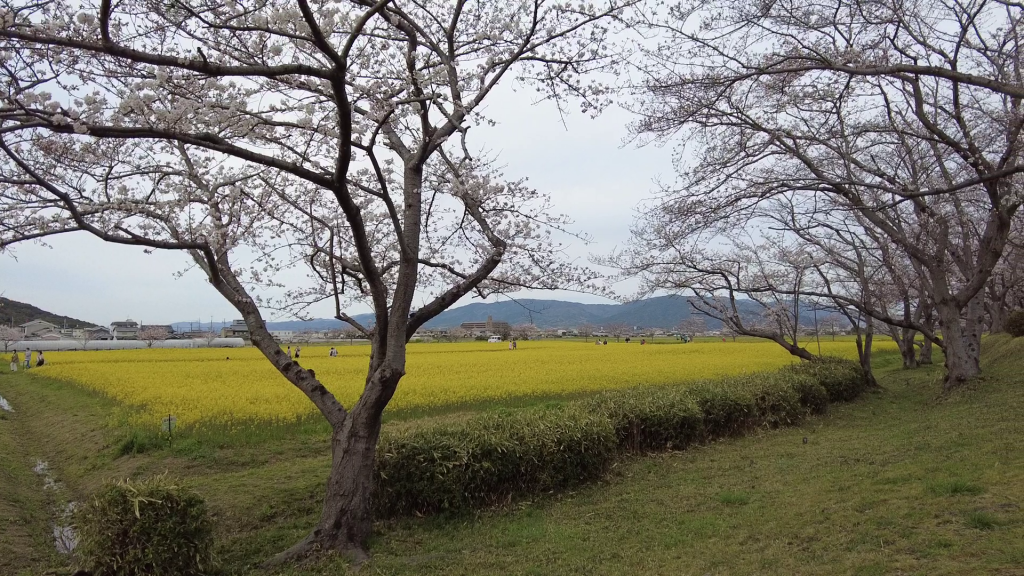
Canola and cherry blossoms at the Fujiwara-kyo Capital site in Kashihara City.
In the summer, the open grassland of Fujiwara-kyo becomes a rich green, interspersed with the odd wildflower here and there, that is also pleasant on the eyes. The Palace Site area is somewhat of an open park through which you can walk pass through freely on foot, and is surrounded by the mix of rice fields and small countryside suburbs that characterizes much of the Nara Basin.
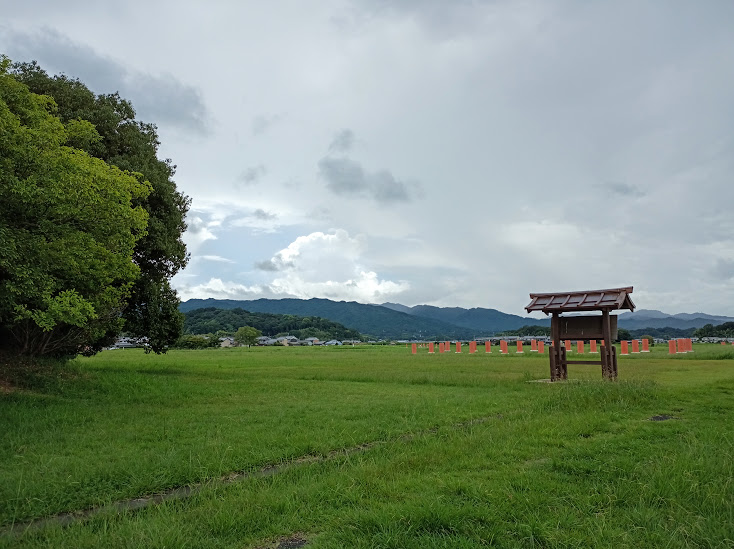
Recreated pillars of a Imperial Palace building at the Fujiwara-kyo. The eastern and southern mountains surrounding the Nara Basin can be seen in the background.
In the fall (from around the end of September through mid-November), Fujiwara-kyo is home to fields of blossoming purple and pink cosmos flowers, (my personal favorite) which are also known as “autumn cherry blossoms.” These wonderful flowers contrast interestingly with the deep red of the higanbana lily, another symbol of fall that are ubiquitous throughout the countryside during the this season.
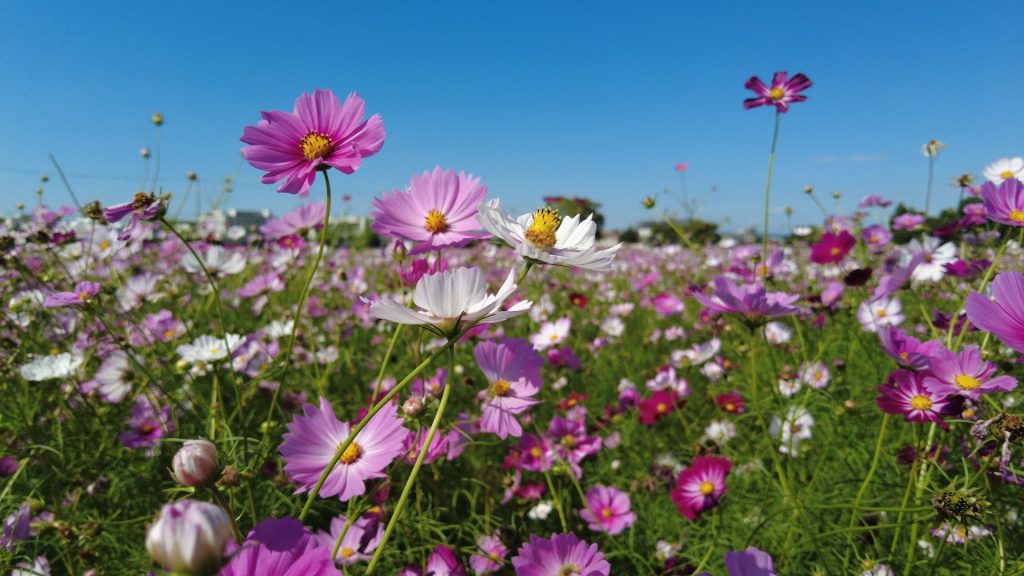
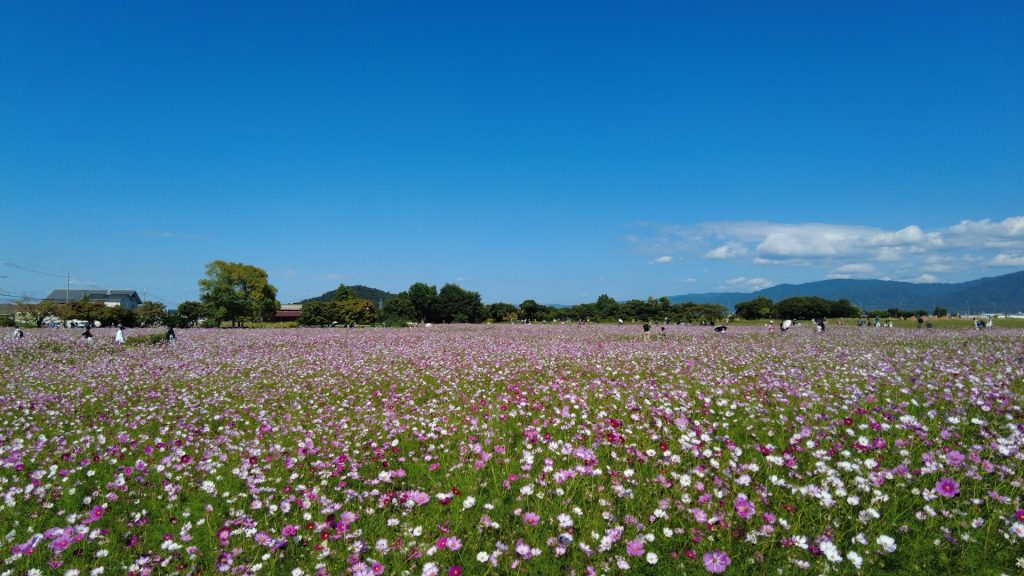
The cosmos flower fields of autumn at Fujiwara-kyo.
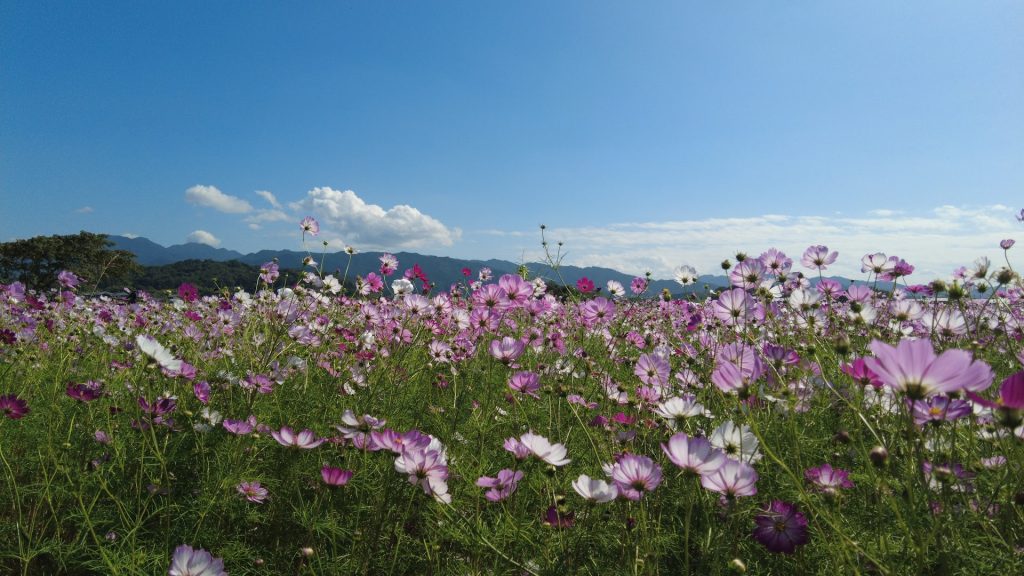
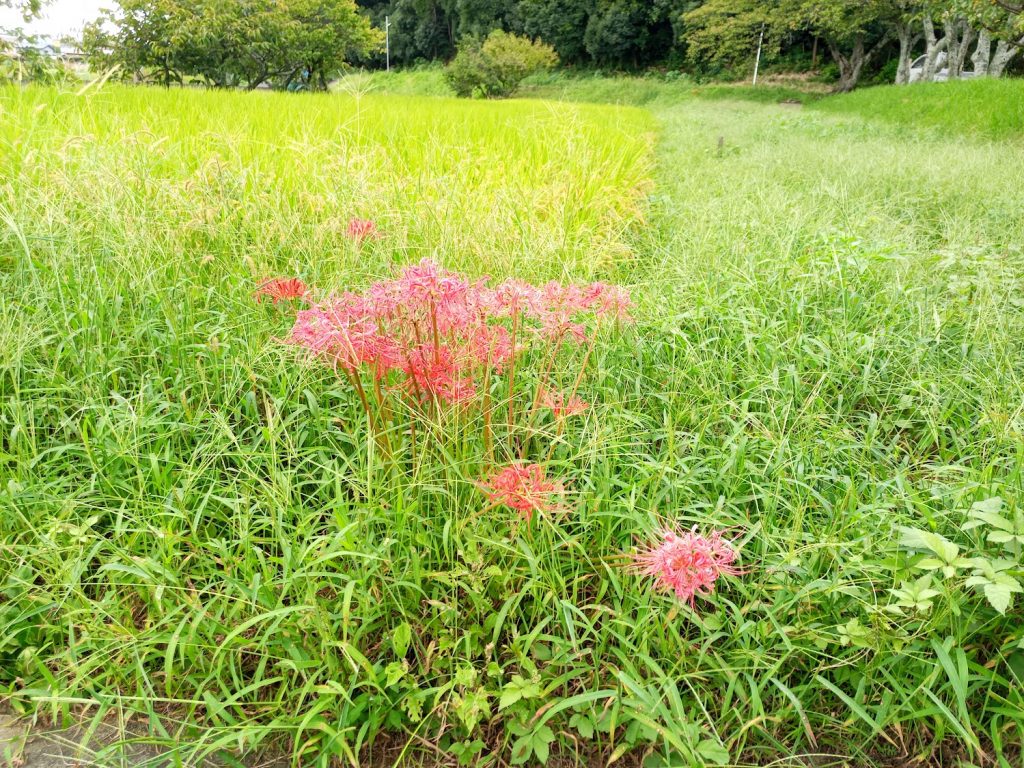
Higanbana lily, one of the beautiful natural indicators that the fall season has arrived in Japan.
The city of Kashihara supports tourism in the Fujiwara-kyo Capital Site during these flowering seasons by maintain paths throughout the area and setting up benches for visitors to use. There are also a few parking lots in the area if you have a vehicle, but it is highly recommended to walk or take a bicycle, as it can get quite crowded (more info on that below).
The closest train station to the Fujiwara-kyo Palace Site can be found is is JR Unebi Station on the Sakurai Line, from which it is about a 15 minute walk to get to where the flowers can be seen.
If you are looking to make a day of exploring the Kashihara City area, a great option is to rent a bicycle at Kashihara Navi Plaza (located next to Yamato-Yagi Station), which operates from 9:00 – 18:00 daily. Interesting sites located nearby Fujiwara-kyo include Ofusa Kannon Temple, Imai-cho Town, and the Kashihara-jingu Shrine. For more information or tour services, feel free to contact us here at Kansai Nara Treasure Travel anytime.

01
FIND YOUR FAVORITE
TRIP ON OUR WEBSITE.
SEND US AN INQUIRY.

02
PERSONALIZE THE TRIP
TO YOUR INTERESTS
WITH OUR CONSULTANT.

03
20% DEPOSIT TO CONFIRM.
BALANCE PRIOR TO ARRIVAL.
PAYMENT BY CC OR TT.

04
WE WILL
MEET YOU
AT THE AIRPORT.

05
DISCOVER THE
TREASURES!